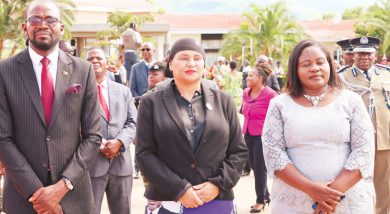Escom invests k4bn to spur supply
The Electricity Supply Corporation of Malawi (Escom) has invested $6 million (about K4.4 billion) for the construction and upgrating of 10 power distribution lines in some parts of the country in a bid to increase the reliability and quality of electricity supply in the major load centres.
The investment for the lines is part of the World Bank financing component of the $56 million (about K41 billion) investment that includes a major upgrade of existing substations and construction of new substations to which the referenced lines will connect.
The areas to be affected include Chingeni Substation-Chiyendausiku, Dwangwa Substation-Liwaladzi, Dwangwa Substation-Dwangwa Trading Centre, Dwangwa Substation-Dwangwa Factory, Karonga-Mlare, Luwinga Substation-Choma Poultry, Mzuzu FMB-Northen Region Water Board Water Works and Nguludi-Bangwe Substation; and upgrating of Chigumula Substation-Bangwe Substation and Telegraph Hill Substation-Luwinga Substation.

With 9.8 percent or roughly thereabout, Malawi has one of the lowest access rates to electricity in the Sub-Saharan Region with the region in general having an access rate of 22 percent, the development should be a recipe for increasing electricity penetration as access to electricity is directly linked to levels of development and economic growth.
In a written response to a questionnaire on Friday, Escom public relations manager Kitty Chingota said the move will increase the power supply capacity that Escom can supply to its customers in the various areas
“The construction of the distribution lines, which are mainly to link existing, new and upgraded substations, will increase the power supply capacity that Escom can supply to its customers in the various areas, thereby allowing Escom to provide more reliable power and also connect more customers to increase access to electricity,” she said.
However, some people have raised concerns on the fate of households who have settled within the confines of the lines.
Chingota however said that while Escom will have to compensate the affected households, people are expected to cease activities on the land that would amount to encroachment under the constructed lines to which a resettlement action plan (RAP) has already been submitted to the Ministry of Lands, Housing and Urban Development.
“When lines are being constructed, prior to commencement, a way leave assessment is done to ascertain the people and land to be affected by the lines and the appropriate compensations determined. For the referenced lines, as required by both Malawian Laws and the World Bank Safeguards Provisions, Environmental and Social Impact Assessment and RAP were done,” she said.
Energy expert Kandi Padambo is on record having said Malawi has failed in its quest to increasing electricity penetration to lack of clearly defined targets.
“Despite the low connection, you will find that even the generation capacity is very small, even if you increase penetration rate without increasing generation capacity that will be a problem. And there is need for us to increase generation capacity,” he said.
In an earlier interview, Malawi Energy Regulatory Authority (MERA) spokesperson Fitina Khonje while admitting on the challenges that low generation capacity has on access to electricity, said that as a regulator, they are encouraging the use alternative sources of energy like solar power as well as increasing transmission system of Escom though the Millennium Challenge Account (MCA) Power Market Reforms program.
The ESSP is being financed by the World Bank (US$84.7 million – original amount) and Escom (US$8 million). The referenced lines are being funded from the World Bank financing component of the ESSP. The ESSP is a complimentary Project to the MCC Compact being financed by the US Government and which is also targeting the expansion and upgrade of ESCOM’s national Transmission and Distribution power network.





